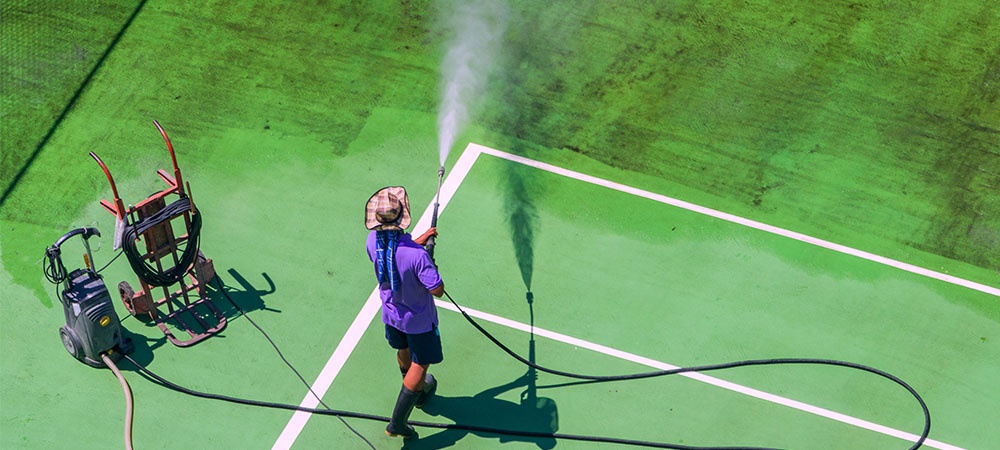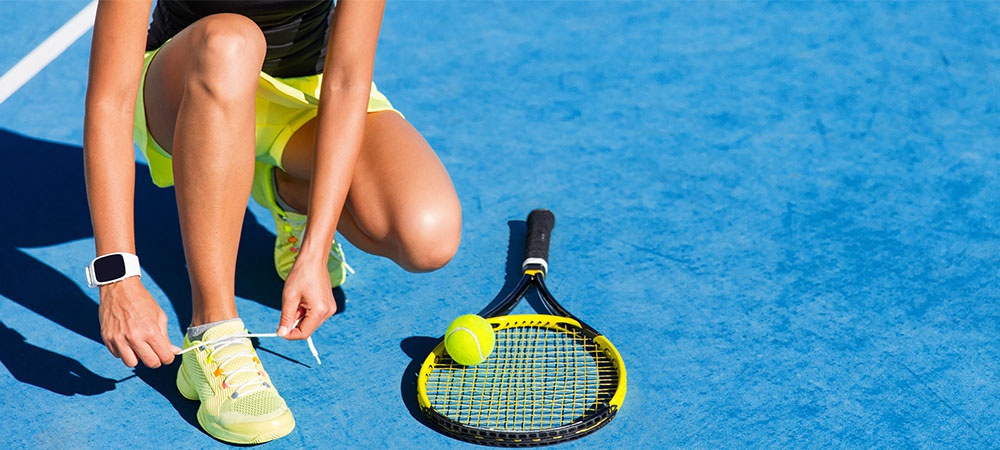The Best Way to Maintain and Care for Your Tennis Courts and Play Equipment
Tennis requires a court to play on and the right equipment and both require maintenance. If you neglect both of these, you’ll soon need to pay out for expensive repairs much more often than you should.
Thankfully there are ways to prolong the life of your courts and equipment. Here we’ll give you some simple tips so that you know what to do. Let’s get started by looking at why maintenance is so important.
Why Is Tennis Court Maintenance Important?
Having a Great Surface – Without maintenance, a tennis court will gradually play worse and worse. The surface will wear away, and the ball may come off faster or slower from certain parts of the court. There would also be an increased risk of injuries.
Good Drainage System – A good tennis court will allow the water to seep through the surface or be diverted away to the side. However, without maintenance, these drainage systems can get clogged with vegetation.
Increased Lifespan – Importantly, maintenance will increase the lifespan of your court. This will increase the time between resurfacing and repairs. If you keep on top of your tennis court care, then your overall costs will be much lower in the long run.
Looks Better – You want your property to look as good as possible, which extends to your tennis courts. A beautiful clean court looks very different from one suffering from weeds, surface water, and cracks.
How to Maintain Tennis Courts?
Tennis courts are expensive pieces of property, and you want to keep them looking at their best. So here’s what you should do.
Clean Your Court Often
The most important step you can take is to clean your tennis court often. How deep you clean it will depend on how often you play and other factors such as the weather.
For example, in a spell of good weather, you won’t need to clean your court much at all. However, in the fall, with the falling leaves and increased moisture, cleaning often is much more important.
Most of the time, this cleaning can just be done with a brush. However, if your court suffers from mould or moss, you’ll want to apply a remover approximately once per month. Another option is to jet wash your court, but this is a more abrasive option.

Remove Debris
Connected to cleaning your court is the removal of any debris. The best example of this is leaves, but it applies to anything that may have blown onto your court. Leaving debris can increase the chance of moss, promote weed growth and block drainage.
Of course, if you’re regularly playing on your court, then you’ll be clearing the debris before play. However, in those colder months when you’re likely to be using the court less, it makes sense to brush away any debris every couple of days.
Clear Vegetation
Grass, weeds, and moss will seemingly grow in the blink of an eye. If you don’t keep on top of it, it can quickly spiral out of control and become a huge job. Make sure you are killing plant life on and around the court.
There are plenty of reasons you need to do this. Leaving vegetation will increase the chance of surface damage, cause drainage issues, and even make the court dangerous to play on. It’s always important to maintain your court, even if you’re not playing on it.
Make Repairs as Soon as Possible
As we’ve mentioned, to keep a tennis court in the best condition, you must stay on top of your maintenance. That includes any repairs that need to be done, such as filling in cracks.
Not only will these issues worsen over time, but they’ll make the court increasingly dangerous to play on. It’s tempting to try and leave repairs to another day or ignore them, but you’ll come to regret it.
How to Maintain Tennis Equipment?
As well as maintaining your court, you’ll always want to keep your play equipment in the best condition. So let’s look at the steps you should take.
Clothing – Any clothing should be washed as soon as possible after you’ve finished playing to prevent any stains from setting in and to stop bacteria growth. Also, most tennis clothing is made with at least part synthetic material, and it’s important to never wash/dry it on high heat.
Racquets – Your racquets need to be stored in a dry atmosphere and at a stable temperature. Added to this, they should be kept in a bag. Regarding restringing your racquet, it’s recommended that you do it roughly once every 50 playing sessions. For example, if you play once a week, it should be restrung approximately once per year.
Grip – Your grip should be replaced once it starts wearing away. If you play often, this could be a couple of times per month or more. Overgrips are quite cheap, easy to replace, and will help to improve your performance.
Balls – Tennis balls should be replaced as soon as you see a drop-off in performance. If they get dirty, cleaning is fairly easy with a soft brush and mild soap.
Tennis Bags – The importance of cleaning your tennis bag depends on how often you play. But after each session, make sure to clear out any food or drink, and keep the bag dry. Also, don’t overstuff it, as this can break the seams.
Shoes – Tennis shoes can be quite fashionable, but it’s important that you only wear them for playing tennis and not for casual wear, otherwise they’ll wear out very quickly. If you do need to wash them, do so with lukewarm water and air dry them.

Final Thoughts
The advantage of good maintenance is obvious. It helps ensure that your court/equipment lasts longer, it will improve playability, and your tennis gear will look better too. It’s a good idea to put a schedule in place to keep on top of it and ensure that little issues don’t become major problems.



